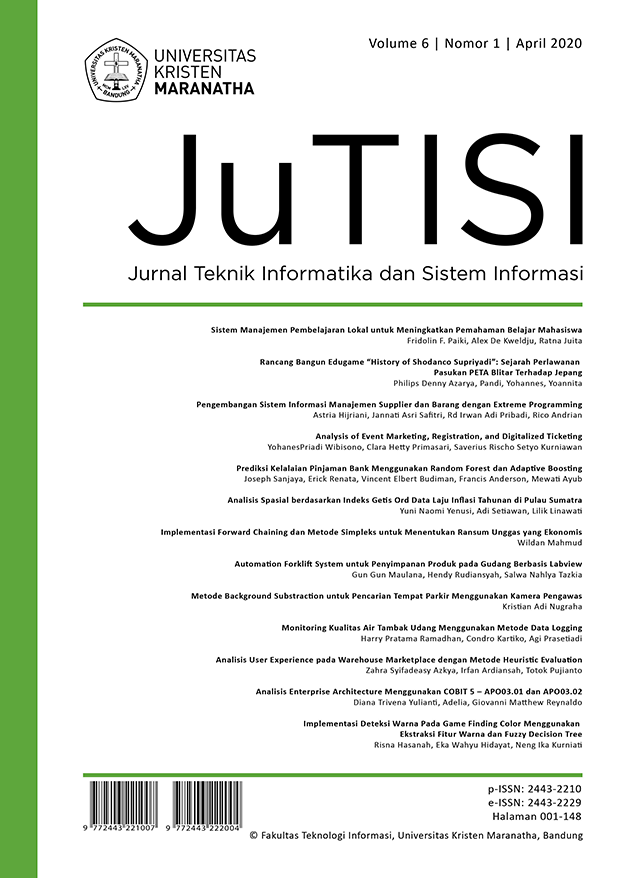Automation Forklift System untuk Penyimpanan Produk pada Gudang Berbasis Labview
Isi Artikel Utama
Abstrak
One of the functions of the warehouse is to store finished products. Stored products will be grouped based on the same type of material or goods, with boxes that have been marked in color or other codes in accordance with the specified classification. In the warehousing system, vertical storage helps in maximizing the use of warehouse areas. Storage of goods that are still manual with the aid of a forklift also has a high risk of damage due to work equipment accidents. The application of automation technology to the warehousing system is needed because it allows the storage and retrieval of products to run more easily and regularly than done manually. This study aims to create an automatic multilevel storage system as a solution to improve work safety and facilitate workers in storing finished products. This system is made in the form of an elevator with a rack containing 12 cells. The elevator is driven by a stepper motor to move in the direction of the X, Y, and Z axis and is controlled through an Arduino Mega 2560 microcontroller. Object identification is carried out by the TCS 3200 color sensor and the infrared obstacle sensor to read the height of the object. In this study, prototype storage and lifter systems have been achieved as movers for storing boxes on shelves. The results showed success in shipping boxes according to the intended address, but there were still average error values on the x-axis motion of 0.125%, and on the z-axis of 0.11%.
Keywords— Arduino Mega 2560; Forklift; Labview; Sensor TCS 3200; Warehouse
Keywords— Arduino Mega 2560; Forklift; Labview; Sensor TCS 3200; Warehouse
Unduhan
Data unduhan belum tersedia.
Rincian Artikel
Cara Mengutip
[1]
G. G. Maulana, H. Rudiansyah, dan S. N. Tazkia, “Automation Forklift System untuk Penyimpanan Produk pada Gudang Berbasis Labview”, JuTISI, vol. 6, no. 1, Apr 2020.
Terbitan
Bagian
Articles
This is an open-access article distributed under the terms of the Creative Commons Attribution-NonCommercial 4.0 International License (https://creativecommons.org/licenses/by-nc/4.0/) which permits unrestricted non-commercial used, distribution and reproduction in any medium.
This work is licensed under a Creative Commons Attribution-NonCommercial 4.0 International License.

